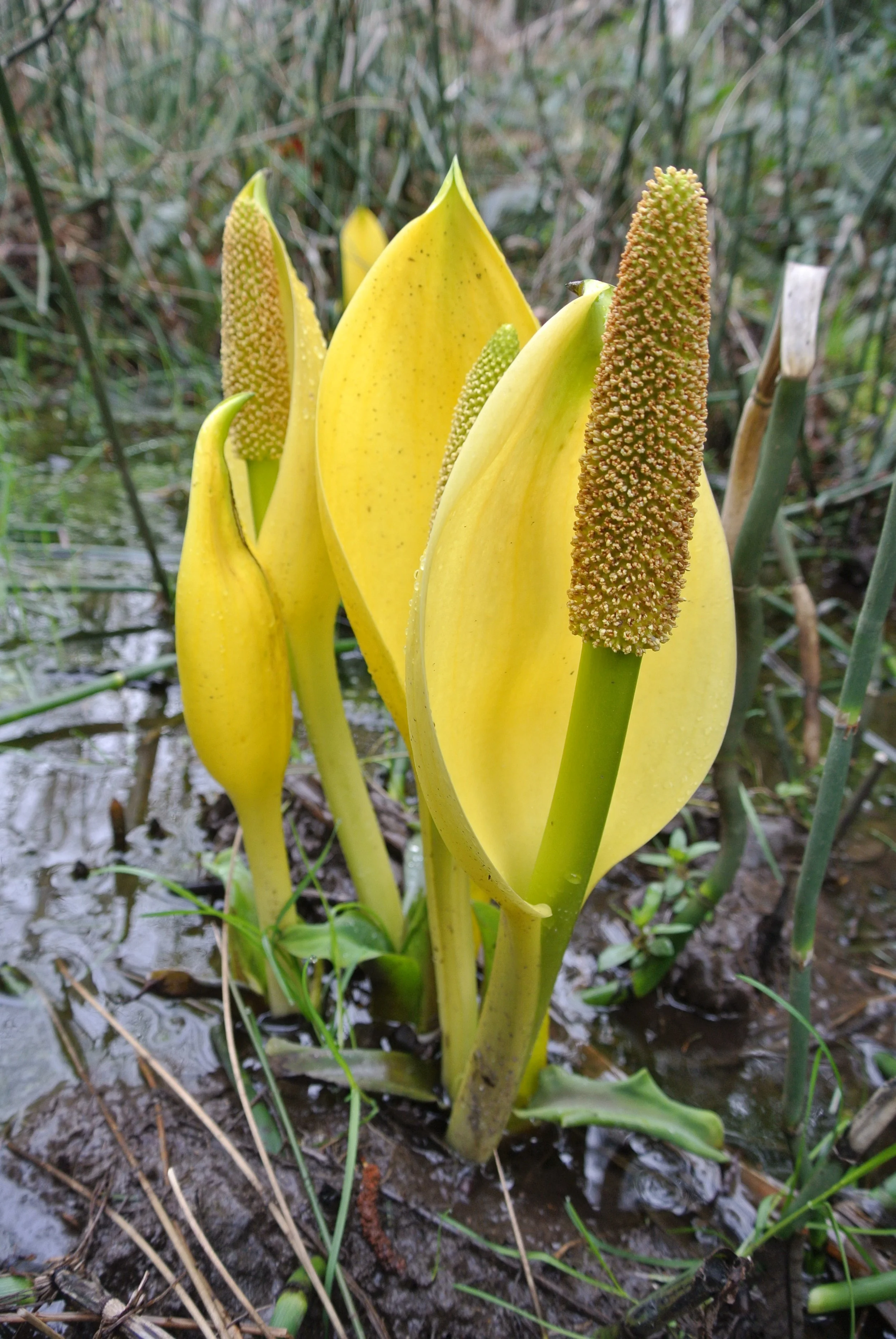Skunk Cabbage
Hul’q’umi’num: ts’a’kw’a’
SENĆOŦEN: ȾOQI¸
Latin: Lysichiton americanus
Description: Skunk cabbage grows in ditches and swampy areas. In late winter to early spring, it begins to develop a tall bright yellow hood, adorned with several small flowers along the spike. The flowers emit a skunky odor that attracts a variety of pollinators. When they are ready to seed, the flowers within the yellow hood turn green and easily fall off. Large, thick, oval-shaped, waxy leaves emerge from the center, reaching lengths of up to 1.5 meters and widths of 60 centimeters.
Harvest and Sustainability: This plant is best to harvest in the spring when the shoots and leaves are young.
Uses: Skunk cabbage is best utilized in early spring, as it contains small amounts of calcium oxalate crystals that may cause irritation to the mouth and digestive tract. However, the younger parts of the plant have lower concentrations of these crystals.
The leaves are particularly popular for wrapping and flavouring food, much like banana leaves in other cultures.
During fall and winter, the roots can become palatable after being boiled multiple times in fresh water, resulting in a ginger-like flavour. The shoots and young leaves also need to be cooked to be edible, offering a taste reminiscent of spicy asparagus.
Additionally, the tough older leaves have been used to line berry baskets and even as makeshift shoes.
Beavers typically inhabit ecosystems where skunk cabbage is found and are known to consume it as a natural remedy for constipation.



